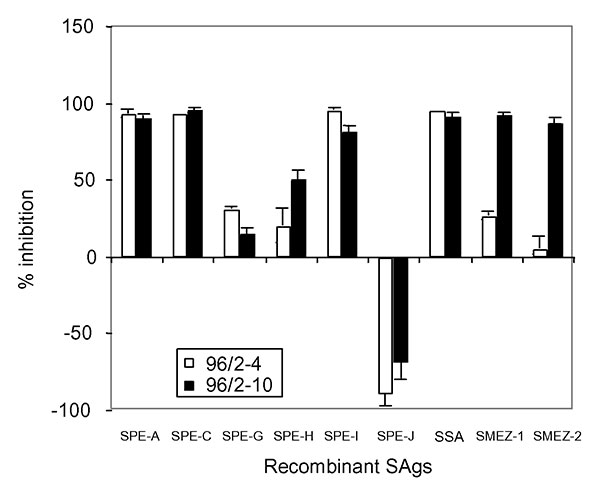Volume 9, Number 10—October 2003
Research
Superantigens and Streptococcal Toxic Shock Syndrome
Figure 4

Figure 4. Seroconversion of patient 96/2 against streptococcal superantigens (SAgs). Peripheral blood lymphocytes were stimulated with various recombinant streptococcal SAgs in the presence of serum 96/2–4, 96/2–10, or fetal calf serum only. The columns show the percentage of inhibition of recombinant SAgs by neutralizing antibodies in patient serum samples. The sequential serum on day 3 showed a complete lack of neutralizing antistreptococcal mitogenic exotoxin (SME) Z antibodies, while serum 96/2–10 converted to a high anti-SMEZ antibody titer. Both sera enhanced the mitogenic activity of recombinant streptococcal pyrogenic exotoxin J, which suggests the presence of an unknown synergistic factor. SPE, antistreptococcal pyrogenic exotoxin; SSA, streptococcal superantigen.